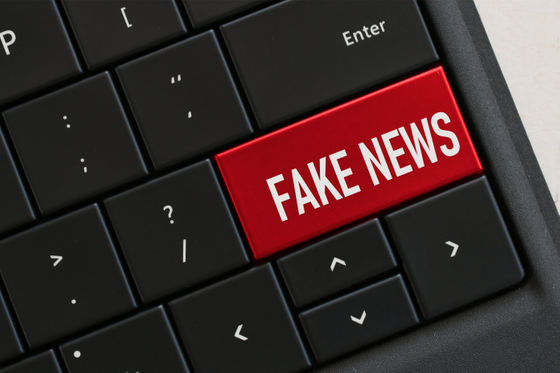Research shows that half of the advertising traffic on fake news sites comes from Google

A study conducted by researchers at the University of Michigan in the United States found that many fake news sites and sites with low-quality content depend on prominent advertising companies such as Google. From this, researchers say that major advertising companies can stop serving ads to fake news sites, reducing the number of fake news sites and making it easier to identify fake news.
Market Forces: Quantifying the Role of Top Credible Ad Servers in the Fake News Ecosystem
Google Serves Half Of Ad Traffic For Fake News Websites, Finds Study
https://www.boomlive.in/explainers/google-serves-half-of-ad-traffic-for-fake-news-websites-finds-study-13541
Leah Bozars and Seren Boudak, who are studying informatics at the University of Michigan, said, 'Misunderstandings' from previous research on fake news and fact check sites in order to investigate the actual state of advertising revenue on fake news sites. We got a list of 'easy-to-give news sites' and excluded closed sites from it. Bozars and colleagues then used Easylist , a filter for ad blocking software, to determine the sources of ads served on fake news sites, and which sites received ads from which advertising companies. I checked if it was.

When we analyzed the relationship between the 'low quality news site' and 'fake news site' obtained in this way and the advertising company and compared it with the analysis result of the reliable 'traditional news site', the fake news site is other Compared to news sites, we found that the number of advertising servers used was significantly smaller, and the percentage of non-advertising in the first place was high. Specifically, 22.9% of traditional news sites have no ads, while 29.6% of fake news sites and 32.8% of low-quality news sites.
Regarding this result, researchers said, 'At first glance, it contradicts the previous view that'fake news sites are actively pursuing profits', but this is'a
As the research team pointed out, the overall traffic of ad-free fake news sites was significantly lower, at 7.5% of the traffic of ad-advertised fake news sites. This was also the case with low quality news sites. The findings suggest that 'fake news sites are more dependent on certain ad servers than traditional news sites,' the researchers conclude.

The research team next looked at the breakdown of advertising companies that advertise on fake news sites, and found that 48% of all advertising traffic on fake news sites was provided by Google. Turned out. 66.7% of ad traffic on fake news sites and 55.6% of ad traffic on poor quality sites are provided by Google's DoubleClick and other 'top 10 most reliable ad companies.' The result was that.
So, as a result of Bozars et al. Analyzing the traffic volume of fake news sites and financial materials of advertising companies, the advertising revenue that advertising companies earn from these news sites is very small compared to the revenue from traditional news sites. It was confirmed that it was.
From these findings, Bozars and colleagues said, 'Major advertising companies make little money from fake news sites, so using a blacklist to block ad delivery to fake news sites is unaffected. If that happens, it's possible that the fake news site will switch to a non-major advertising company, but if the site is filled with dubious ads served by low-credit companies, viewers will be able to identify fake news. Will be easier. '
Related Posts:
in Note, Posted by log1l_ks







